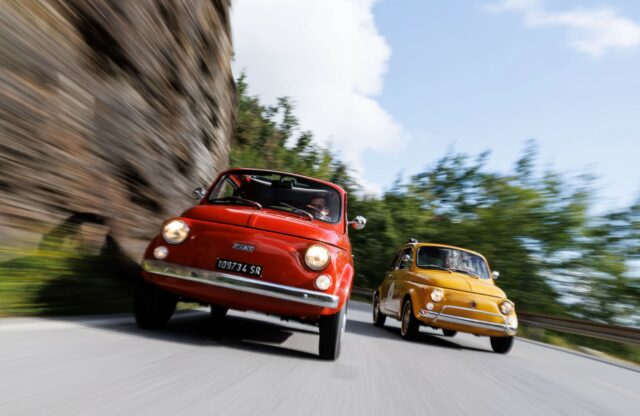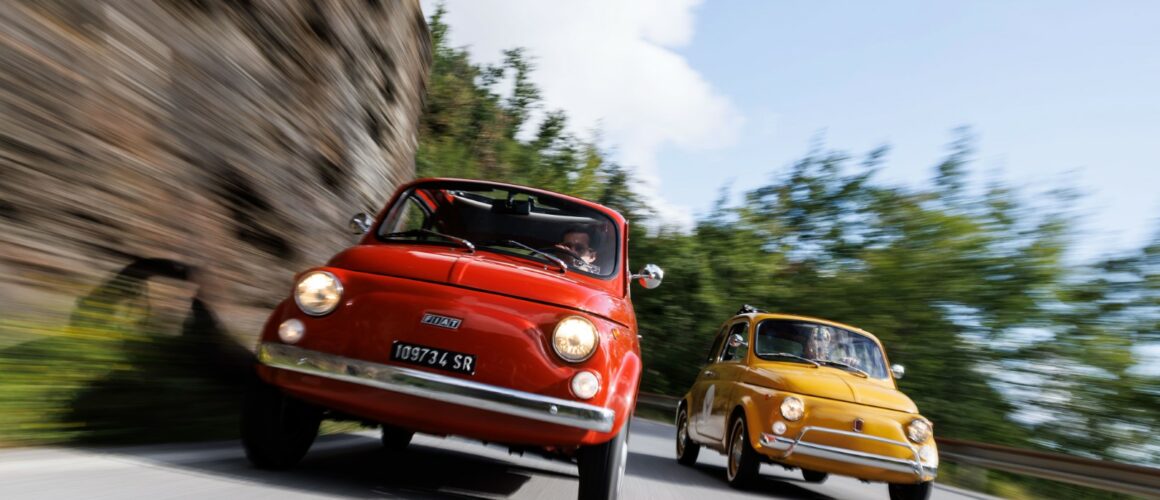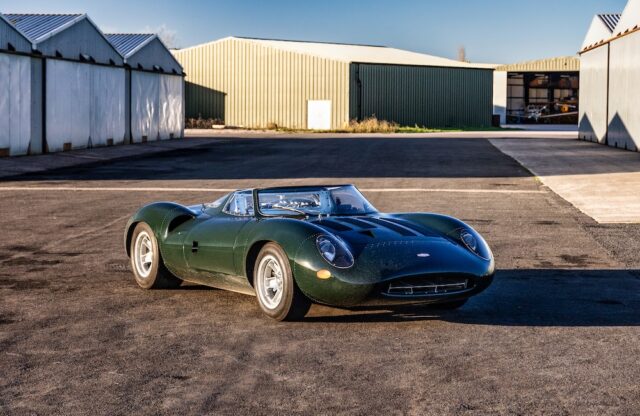Fiat recently launched a study that found 67 percent of Brits long for a more Italian lifestyle – a result that prompted the car maker to produce a book called La Dolce Vita Guide which, says the blurb, is “full of tips, ideas and inspiration from Italian experts”.
These include guidance on how to make pizza, drink coffee, eat ice cream, style up your house, style up yourself and – of course – mix a Negroni.
But one obvious way to feel more Italian – which the book fails to mention – is to drive a Fiat 500. Not a 21st century lookalike, either, but an original ‘classic’ from the 3.8 million produced between 1957 and 1975.

Despite producing a meagre 15bhp (yes, 15), the cars can hit 60mph and, as we proved, will happily pull two grown men up a mountain
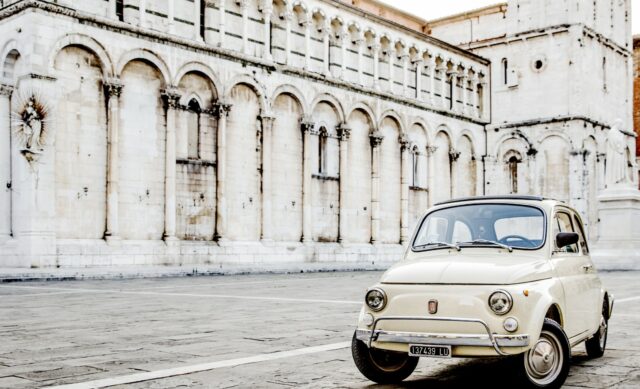

It’s not known exactly how many are left, but anyone who has passed through Italy of late will undoubtedly have seen hundreds of them, be that continuing to provide sterling service on the roads, tucked away in barns and garages, or abandoned up alleyways and in fields.
And it’s the fact that so many 500s survive – combined with the model’s continuing usability and appealing character – that gave rise to a company called Real Italian Cars.
Founded last year by property developer Amadeo Provenzali, rally driver Mattia Vita and Anglo-Italian Pirelli tyres PR Anthony Peacock, ‘RIC’ sources Fiat 500s, takes them to its workshop outside the Tuscan town of Lucca and strips them down to their bare bones.

From there the cars are meticulously rebuilt, either to original specification or to that of an individual client’s requirements – which can mean incorporating anything from bespoke upholstery to special paint finishes and from luggage racks to engine and transmission upgrades.
The work is carried out in a large and distinctly low-tech concrete building halfway up a mountain.
A veritable Aladdin’s cave of small Fiats and all the parts you could ever need in order to keep one running, it is the domain of 79-year-old Nello Bechelli – who has been working on the diminutive cars ever since they could be bought new back in the 1960s.
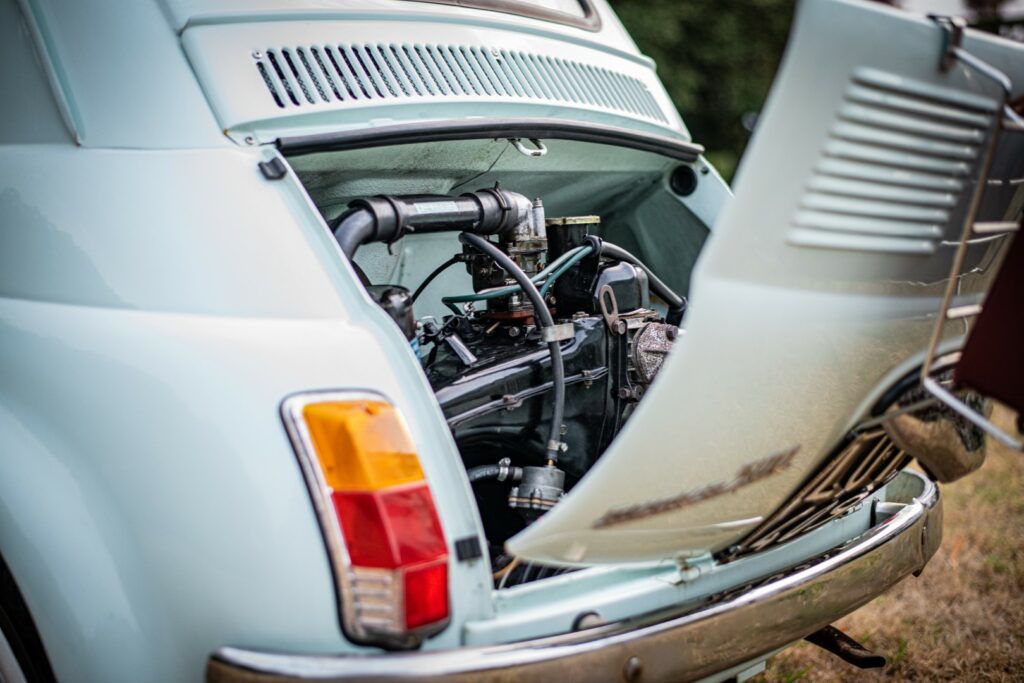
When I arrived at Bechelli’s artfully dark and dust-covered premises, he was gazing into the engine bay of an Agip Yellow 500, listening intently as its 479cc twin-cylinder air-cooled engine emitted a cartoon-like cacophony of pops, bangs and backfires.
The car was missing a clutch cable, and the driver’s door didn’t appear to be attached.
“That’s one of the two we’ll take over the mountain when you’ve finished looking around,” said Anthony Peacock, in what I took to be a statement of hope rather than expectation.
But within 15 minutes Bechelli had worked his wizardry, and the engine was running with watch-like smoothness, the clutch was fully operational, the driver’s door was closing with a satisfying clunk and we were ready for the off.

Mattia Vita and Amadeo Provenzali took Agip Yellow, while Peacock and I shoe-horned ourselves into a Coral Red 500R, one of the stop-gap models produced from 1972-1975 in order to dovetail with the introduction of the 500’s replacement, the 126.
At this point it’s worth mentioning that my very first car was an example of the 500’s slightly bigger brother, the 600D. I bought it for £15 from a jockey when I was 14 years old and too young to drive. It was a non-runner and remained that way until I sold it – meaning I never drove it, and, until my encounter with RIC, had never driven a 500, either.
The idea of traversing an alpine pass in order to make a scenic run down the other side to the coastal town of Forte dei Marmi seemed to me to be a bit optimistic, so it was a surprise to discover just how incredibly willing the little 500 really is.
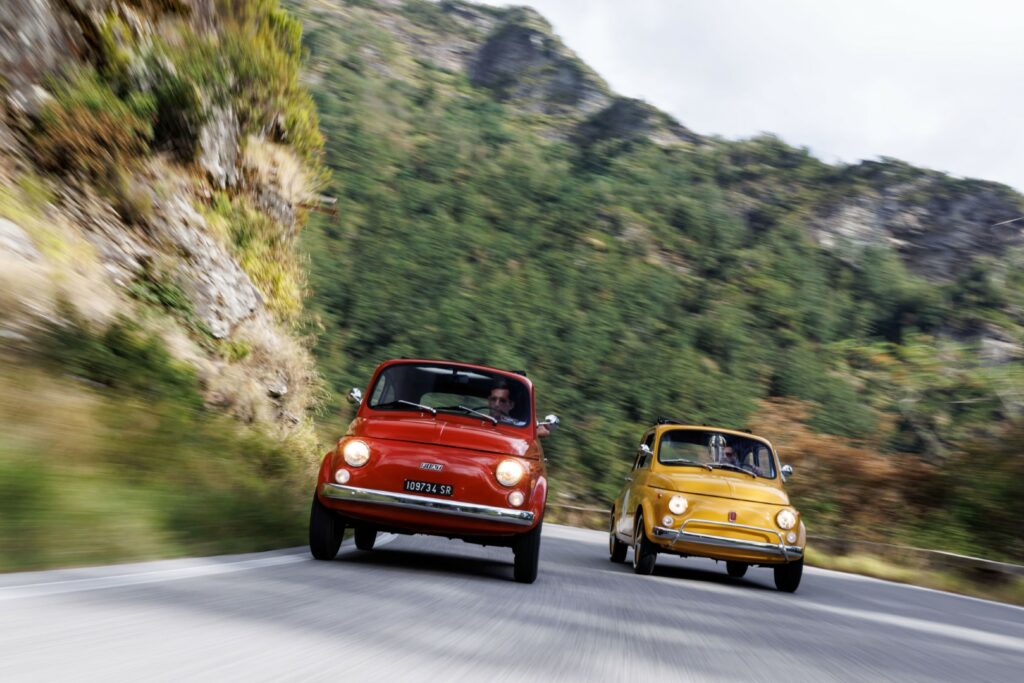
Despite producing a meagre 15bhp (yes, 15), the cars can hit 60mph and, as we proved, will happily pull two grown men up a mountain given plenty or revs and an equal amount of patience.
Rather like a Citroën 2CV engine, the air-cooled twin feels un-burstable, and even though you’ll never be going truly ‘fast’, anything above 30mph starts to feel thrillingly quick.
And it’s because the 500 is a truly usable classic, says Peacock, that RIC has sold no fewer than 50 in its first 12 months of operation.
“We have sent them all over the world, from Hawaii to Abu Dhabi, from Sweden to Australia, and from the UK to Spain,” he explains.
“Buyers come from all walks of life. Some want a 500 as a fun car to keep at a holiday home. Others want one to drive on a daily basis as a way of navigating ever-more congested cities – because these cars are small, nippy, economical and easy to drive, they are as practical today as when the streets of Rome were rammed with them 60-odd years ago.”
Also adding to the 500’s appeal is the fact that it is a simple car to ‘understand’, both mechanically and in terms of model variations.
The original 500D featured rear-hinged ‘suicide’ doors. Then came the 500F, with conventional, front-hinged units (1965-1968), followed by the L (for Lusso – 1968-1972), which had extra chrome, better upholstery, reclining seats and the luxury of carpets.
The run-out model was the aforementioned R (for Rinnovata) which got the synchromesh gearbox destined for the 126, while variations on the theme that were produced across the car’s lifespan included the rare, open-topped Spiaggina, the Ghia Jolly beach car, the Giardiniera station wagon and the souped-up Abarth competition model.
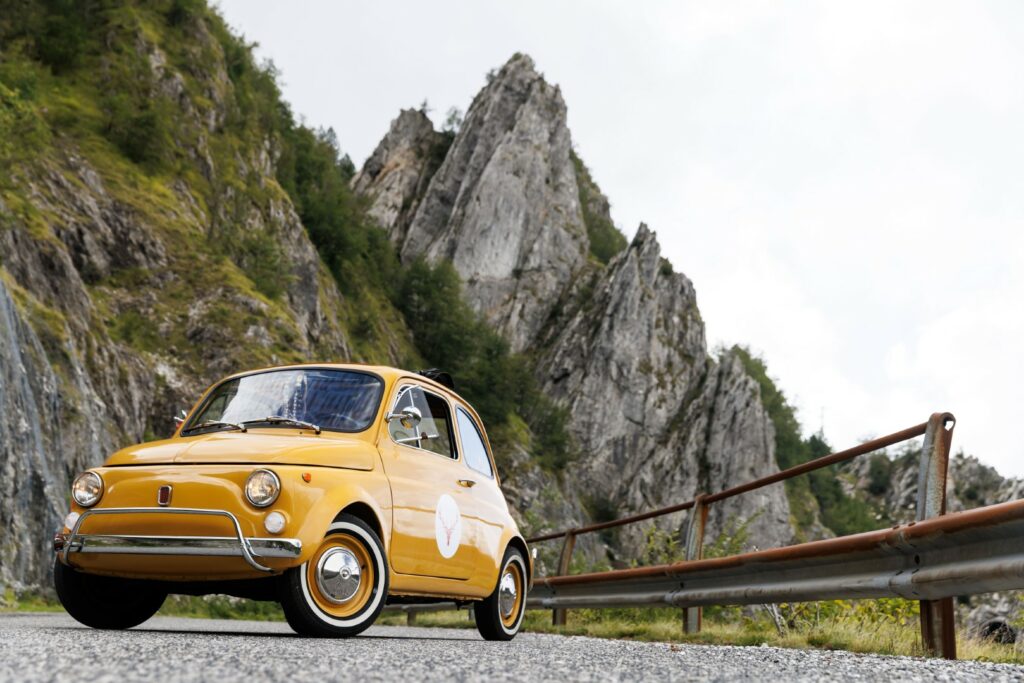
And while RIC specialises in the prolific basic 500 (which costs from €9000 fully restored) the team will source and rebuild any of the above-named variants up to the rarest and most sought-after models, which can carry price tags of as much as €30,000.
Whichever one you choose, however, one thing is guaranteed: driving it will make you a whole lot more Italian…
You can find out more here.
